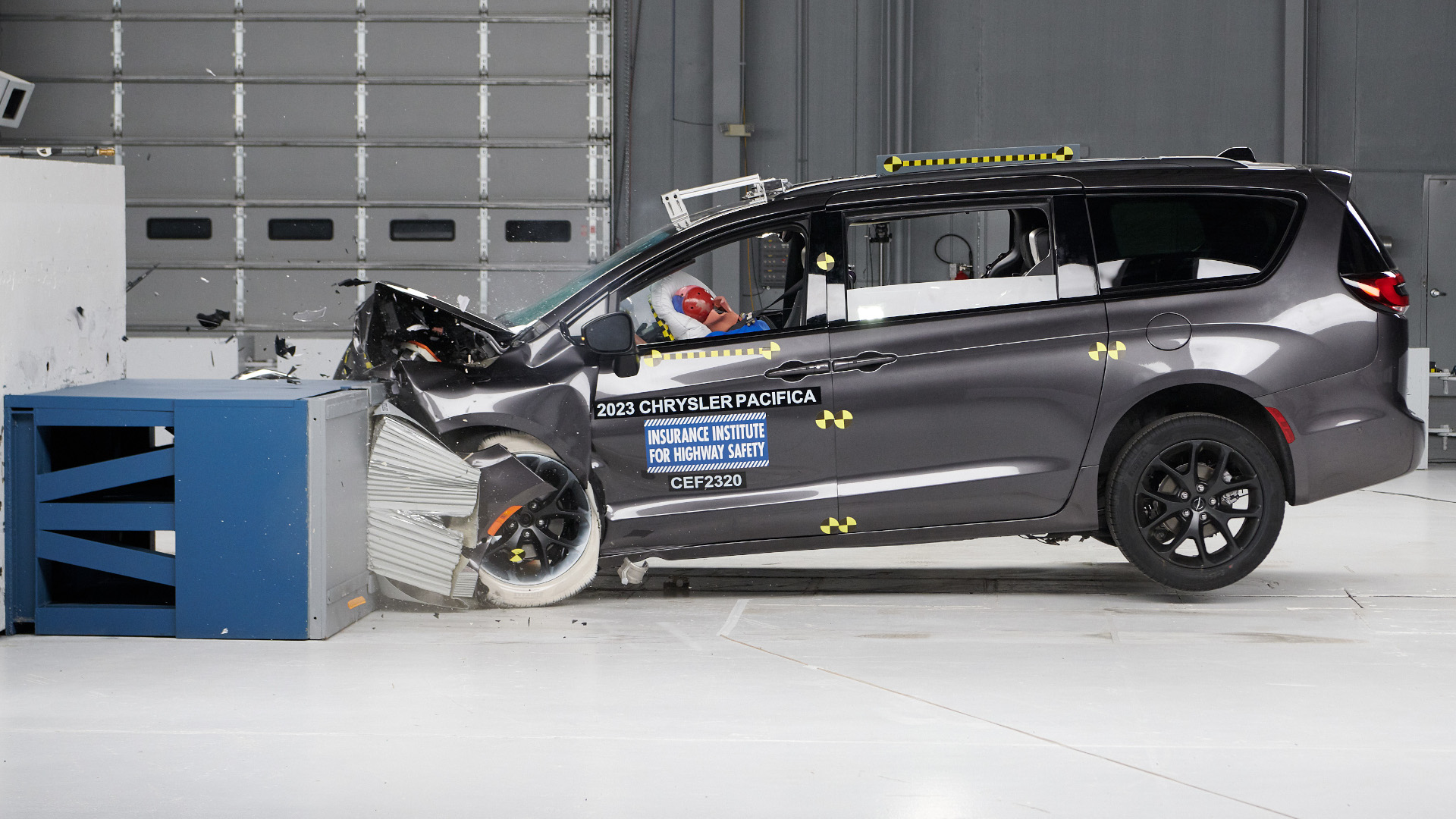

Minivans are a great way to haul a family or half a softball team, even if they’re often overlooked for more popular SUVs. The Insurance Institute for Highway Safety (IIHS) isn’t necessarily a fan of the van, though. The organization’s latest study raises concerns about safety for backseat passengers in all major offerings in the segment on the market today.
The IIHS recently tested four minivans—the Chrysler Pacifica, Kia Carnival, Toyota Sienna, and the Honda Odyssey. Each performed below expectations in the updated moderate overlap front crash test, which is designed to evaluate the safety of passengers in the rear rows. The Pacifica, Carnival, and Sienna all received a “marginal” rating, while the Odyssey received a “poor” grade.

Supplementary safety features were also considered subpar by the IIHS. The organization noted that all but the Sienna lacked seatbelt reminders for second-row passengers.
Given the minivan’s intended role as a family transporter, the results were particularly disappointing to IIHS President David Harkey. “Back seat safety is important for all vehicles, but it’s especially vital for those, like minivans, that customers are choosing specifically to transport their families,” said Harkey, adding “It’s disappointing that automakers haven’t acted faster to apply the best available technology to the second row in this vehicle class.”
The moderate overlap front crash test was updated to focus on rear seating, as data had indicated that those passengers were now most at risk of fatal injury in a crash. According to the IIHS, this is largely due to the fact that front-row safety has improved to a significant degree with improved airbag and seatbelt designs, while rear seating areas haven’t received the same attention. Regardless, the organization notes that the back seats are still the safest area for children, due to the risks of airbag injuries to smaller bodies when in the front row.
In the updated test run by the IIHS, a second crash test dummy is placed in the rear seat behind the driver. Where the main dummy in the driver’s seat is the size of an adult man, the rear dummy is closer to the size of “a small woman or 12-year-old child.” To secure a good result, the rear-seat dummy must not be at “excessive risk” of injury to the head, neck, chest, or thigh. The seatbelt should also stay properly in place without the dummy sliding beneath it, and its head should not hit the interior or front seatback.
The minivans performed poorly in the test in a variety of ways. Poor belt positioning or excessive seatbelt forces meant rear-row passengers were at risk of chest injuries. Other issues included the Pacifica failing to deploy a side curtain airbag during testing, and excessively high forces on the head and neck in the Odyssey.
It bears noting that this isn’t just a problem for minivans, however. The IIHS published a study earlier this year showing similarly concerning results for backseat passengers in small cars, too. With the ever-increasing average mass of vehicles on American roads, you’d kind of expect that, but news that family haulers are failing the grade as well comes as a bit of a surprise.
While these results are eye-opening, they’re also the first step towards pushing automakers to improve in these areas. Customers purchasing minivans will want to know that every member of their family is as safe as possible, should the worst come to pass. Automakers that get their safety design right for the second row will have a powerful selling point to leverage at the dealership.
Got a tip? Let the author know: lewin@thedrive.com